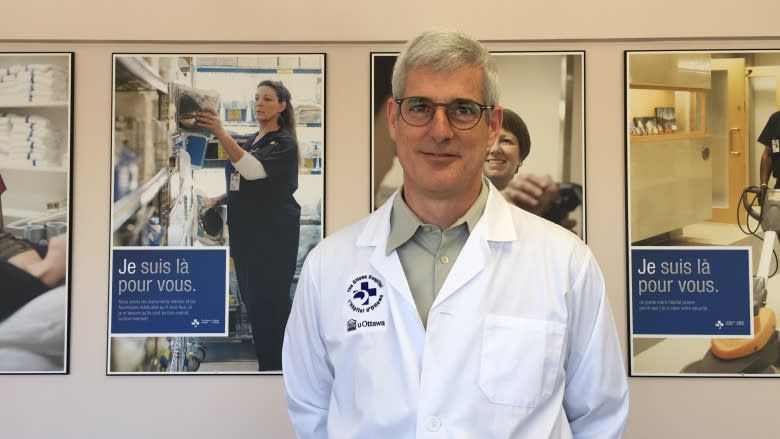Lace up your shoes: new study shows running can keep bones young
A new study shows running might not only be beneficial for the waistline, but also keeps bone marrow in the spine healthy and young.
The study is the first of its kind and was conducted by Dr. Guy Trudel and Dr. Adnan Sheikh from the Ottawa Hospital, along with Dr. Daniel Belavy from Deakin University in Melbourne, Australia.
The study looked at 101 men and women aged 25 to 35 who were either long-distance runners, joggers, high-level cyclists or lived sedentary lifestyles.
Researchers measured and compared different components of the spine, including how much fat was in the bone marrow.
"We found results that were very interesting and maybe even beyond what we were expecting," said Trudel, a rehabilitation physician.
The research found runners had lower fat content in their bones, compared to cyclists and those who did no exercise at all.
"The more you run, the lower amount of fat within your bone marrow," said Trudel.
He said the results showed that impact activities, like running, are good for the bone structure, blood cell production and can keep bone marrow young.
He said this is important to know as people age and develop conditions such as anemia or osteoporosis.
Fat has a negative impact on bones
Trudel said the study looked at fat content in the bones because it's an indicator of overall bone health.
"We know that fat has a negative impact on the bones," he said.
Red blood cells, white blood cells, platelets and fat cells are all produced in bones.
As people age, the blood cell-producing bone marrow can convert into cells that produce "fatty" marrow.
High levels of fat content in the bones lead to a decrease in blood-cell production.
He said this could explain why elderly people are more likely to have anemia or osteoporosis.
Surprising results
Trudel said the results of the study were the same for women and men.
Participants who were sedentary had higher levels of fat in their bones compared to runners, who had the lowest levels.
In fact, the study revealed runners had younger bone marrow than other participants.
According to a press release from Deakin University, long-distance runners who ran more than 20 kilometres a week were shown to have bone marrow eight years younger than participants who performed no regular exercise.
Trudel said surprisingly, cyclists had the same level of fat content in their bones as people who did no exercise at all.
"The fact that there was no repeated shocks to their skeletons because they were rolling on their bikes set them up at the same level as the people who do zero exercise," said Trudel.
Trudel said the reason why runners have lower fat levels in their bones is because they are doing impact exercises that puts pressure on the bones.
Cyclists don't have this type of impact.
Repeated shock
Trudel said there is a theory about why impact activities are good for bone health.
In our bones there are cells that can either become fat cells, bone cells or another type of cell.
He said if there are shocks to the bones, the cells can "sense" this and the shock stimulation turns them into bone cells.
If there is no shocks to the bone, they will turn into fat cells.
Trudel said the results don't show if running can reverse the levels of fat in the bones once it forms, but people could halt development and keep their bones healthy by running.
"You could remain at the same level of fat [in the bone] as the day you started running," he said.
Impact on joints
Although the study shows that running is beneficial for bone health, many people find running hard on their joints.
Trudel said "this is the trade off".
He said that running with the proper training and technique is very safe, even for long distances.
However, poor technique or simply overdoing it by pushing the body too hard can lead to injury.



